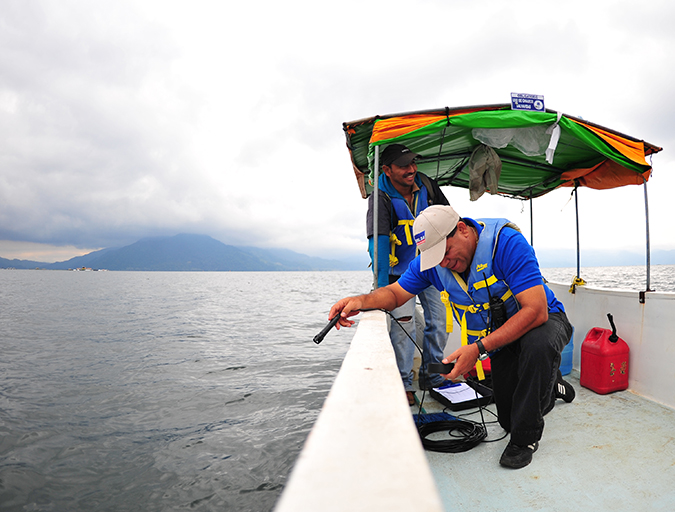Sustainability Incubator founder Katrina Nakamura discusses complexities of identifying high-risk origins
Editor’s note: This is the second in a three-part series on advancing human rights solutions in the global seafood supply chain, in advance of the SeaWeb Seafood Summit, Feb. 1-3, in St. Julian’s, Malta. Read Part 1 here. The Advocate will be reporting from the event, and GAA Editorial Manager James Wright will be moderating a breakout session titled “Gauging consumer engagement and perceptions of sustainable seafood.”
***
Ensuring the ethical treatment of workers along the seafood supply chain could be considered a table-stakes proposition, a minimum-entry requirement for doing business. But when evidence of forced labor and abuse came out of Thailand’s fishing and seafood processing industries, the matter took on greater urgency and laid bare the enormous challenge of creating ethical assurances for the world’s most complex and highly traded food products.
Katrina Nakamura understands the daunting nature of the work. The founder of Sustainability Incubator, an ethical-sourcing consulting firm in Honolulu, Hawaii, helps seafood suppliers “strengthen their license” to operate in source regions and in trade. One of its services is Labor Safe Screen, a diagnostic program to help seafood companies assess risk and strive for compliance with social responsibility standards and laws.
“What has happened, to date, before this issue blew up, is companies did the minimum, putting up a statement that says, ‘We don’t have tolerance for this.’ That hasn’t proven to be sufficient,” Nakamura told the Advocate. “What works, and what’s uncomfortable but is the only solution that is effective, is to identify in the supply chain, behind the products of concern, where the risks are. We look at the whole chain.”
Investors and regulatory agencies examine a company’s culpability or association to human-rights violations to ensure that they took steps that their products have a legal origin. Hidden parts in the seafood production chain been unmasked: undocumented workers toiling on ships that remain at sea for months, and raw material processing subcontracted to unlicensed facilities, such as the shrimp “peeling sheds” where a December 2015 Associated Press story detailed widespread abuses.
What works, and what’s uncomfortable but is the only solution that is effective, is to identify in the supply chain, behind the products of concern, where the risks are. We look at the whole chain.
Thailand has been under the microscope for quite some time. The International Labor Organization (ILO) conducted a survey, the findings of which were released in March 2013, of more than 500 primary shrimp processing facilities in Thailand’s Samut Sakhon Province, a hub of shrimp processing activity. It found that nearly 90 percent of the large processing enterprises had a subcontracting arrangement with another factory, which only muddies traceability or transparency efforts. Most enterprises, large or small, relied on migrant labor; large companies’ workforces were 85 percent temporary workers.

“What that means is these subcontracting arrangements on processing and peeling are kind of a loophole, where the exporter may say all my workers are legal. But it may be they don’t actually employ anybody who’s doing the work,” said Nakamura. “They may have a relationship with another factory where forced labor is occurring, so that’s an exposure.”
The first step for any company looking to clean up its supply chain is to identify the known risks for their product, according to Nakamura. Labor Safe Screen relies on the U.S. State Department, which publishes an annual Trafficking in Persons (TIP) report (which dropped Thailand to the lowest status, Tier 3, in 2014), and its worldwide network of informants that support its findings. The TIP identified significant evidence of trafficking in fishing in 53 countries.
Nakamura also points to the U.S. Department of Labor’s new Sweat and Toil app as a useful tool. Labor Safe Screen also collaborates with the Nexus Institute, ILO and the Labor Rights Promotion Network in Thailand, among others.
“We wanted to set up a system where companies say, ‘OK, this is unpleasant but I have to face this, so let’s do it.’ We don’t presume guilt,” said Nakamura. “We’re helping people figure out what the inputs are to the seafood they care about and take a real look at those inputs and see where there’s any matchups against evidence [of abuse] that is published.”
Seafood businesses can look to another industry — electronics — for lessons on managing supply chains with myriad inputs, many of them rare and precious metals (such as conductor components). In recent years, both GE and Apple have implemented comprehensive procurement protocols for their materials, Nakamura said. In a somewhat radical move, Apple last year recouped $3.96 million in recruitment fees to indebted workers in Malaysia and elsewhere, according to its publicly released “Supplier Responsibility 2015 Progress Report.”
“People are going to need to show the diligence, understand where the hot spots are and take some collective efforts to resolve them,” Nakamura said, adding that seafood offers even more intricacies than electronics. “It’s the most complex. We just don’t have the sightlines at sea. Think of all the work it took to put the Global Aquaculture Alliance in place. It’s covering a reliable proportion of farmed supply but not all, and that’s all on land. Now imagine the complexities of doing that on the high seas with Taiwanese, Korean, Chinese, all the fleets. This is why we have such a hard time managing fish stocks. It’s very difficult but it’s going to happen.”
Nakamura stresses that comparatively low wages paid to processing workers in developing countries are not inherently problematic. A lack of oversight in Thailand during a time of massive industry growth, coupled with economic and political upheavals, is what led to its current issues; the rapid growth of the industry in Thailand was indeed fueled by captive, unpaid work, she said.
Nakamura hopes that suppliers can distinguish themselves as good actors in the market via voluntary reporting.
“At the end of the day it’s about ethical sourcing that you can actually pull off, that you can literally achieve, because your suppliers can comply with it,” she said. “And not just by saying it but actually taking a look at where we have transparency now and where we don’t. It’s actually a remarkable time. Amazing things are happening.”
Now that you've reached the end of the article ...
… please consider supporting GSA’s mission to advance responsible seafood practices through education, advocacy and third-party assurances. The Advocate aims to document the evolution of responsible seafood practices and share the expansive knowledge of our vast network of contributors.
By becoming a Global Seafood Alliance member, you’re ensuring that all of the pre-competitive work we do through member benefits, resources and events can continue. Individual membership costs just $50 a year.
Not a GSA member? Join us.
Author
-

James Wright
Editorial Manager
Global Aquaculture Alliance
Portsmouth, NH, USA
Tagged With
Related Posts

Intelligence
Warning: Shrimp salad may contain shrimp
Crustaceans, fish and any food that contains protein have the potential to cause allergic reactions in some individuals. To protect consumers, seafood businesses must stay abreast of changing regulations.

Intelligence
Risk v. hazard: A dispassionate look at pangasius
Vietnam’s pangasius industry captivated the global seafood industry, environmental organizations and the mass media. A scientific look at harmful substances detected in exported fillets and the reporting of the associated health risks through the media finds wide disparities.

Responsibility
Intelligence, integrity in the fight against forced labor in seafood
In previewing the SeaWeb Seafood Summit, the Advocate examines human rights in the supply chain and the people who advance solutions in rooting out worker abuses. In part one of a three-part series, Environmental Justice Foundation co-founder Steve Trent talks about linking environmental security with human rights.

Responsibility
Fairness, stability in ensuring human rights in seafood
In the last of our three-part series on advancing human rights solutions in seafood, Magdalena Lamprecht-Wallhoff shares how social investment is key to the culture and success at Regal Springs Tilapia, the world’s largest farmed tilapia producer.


